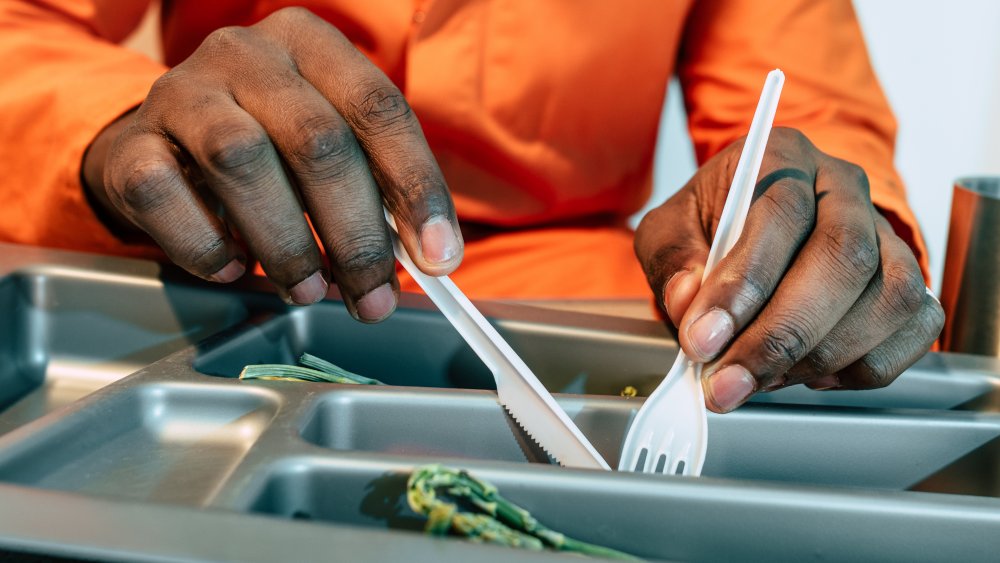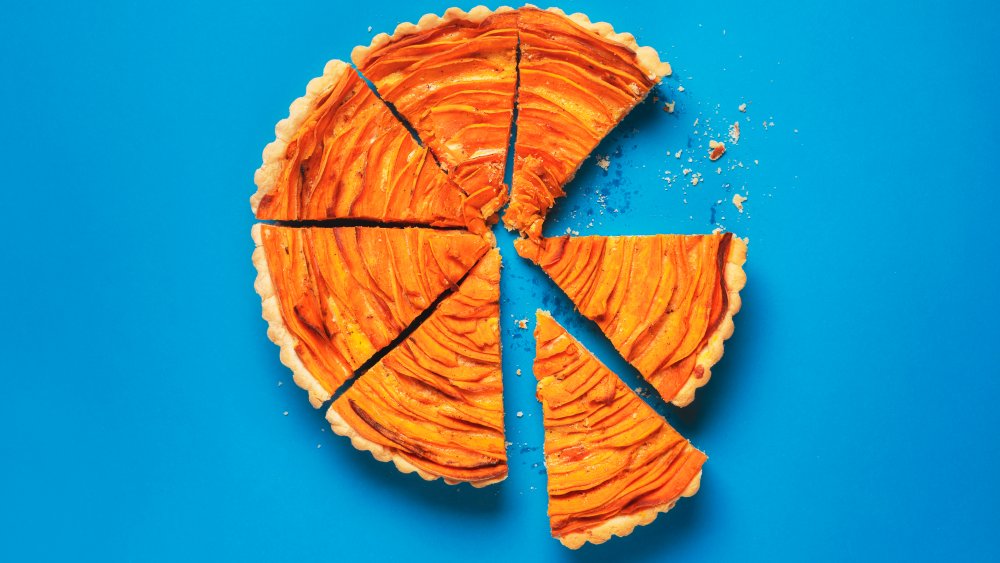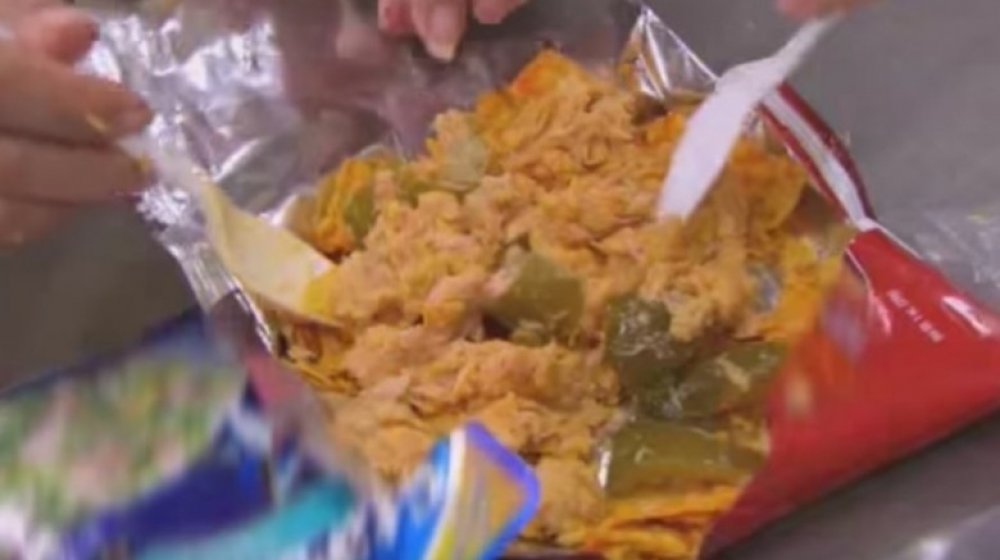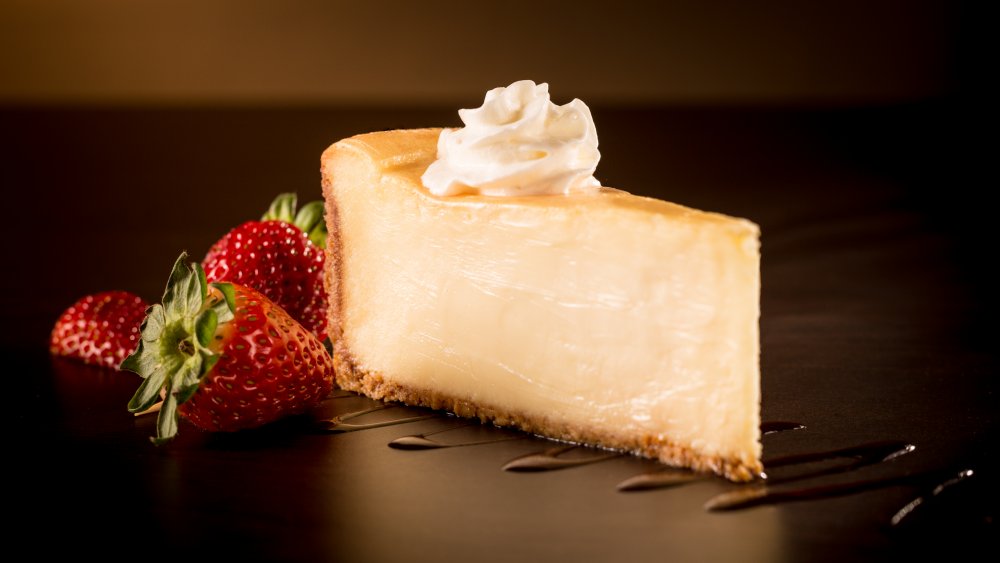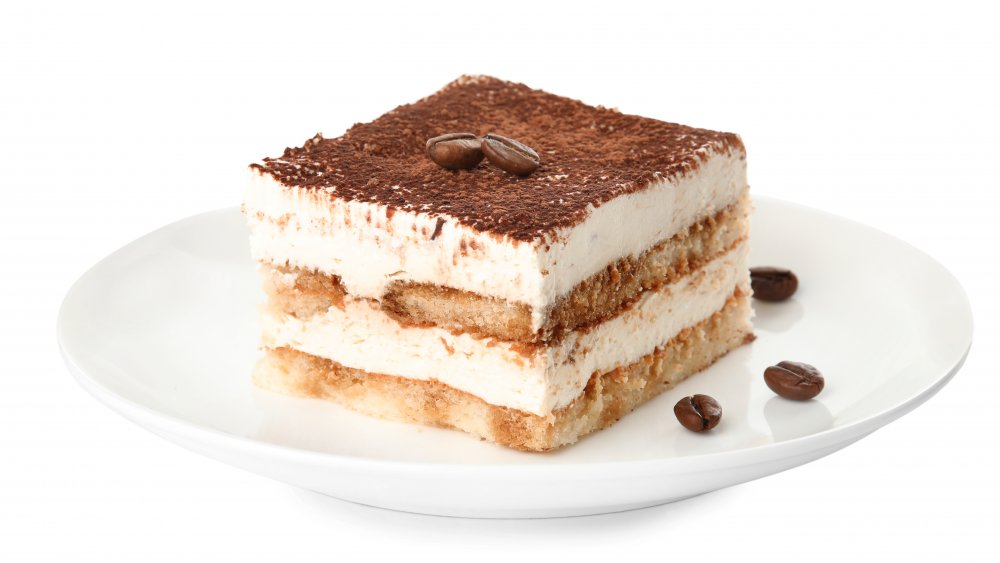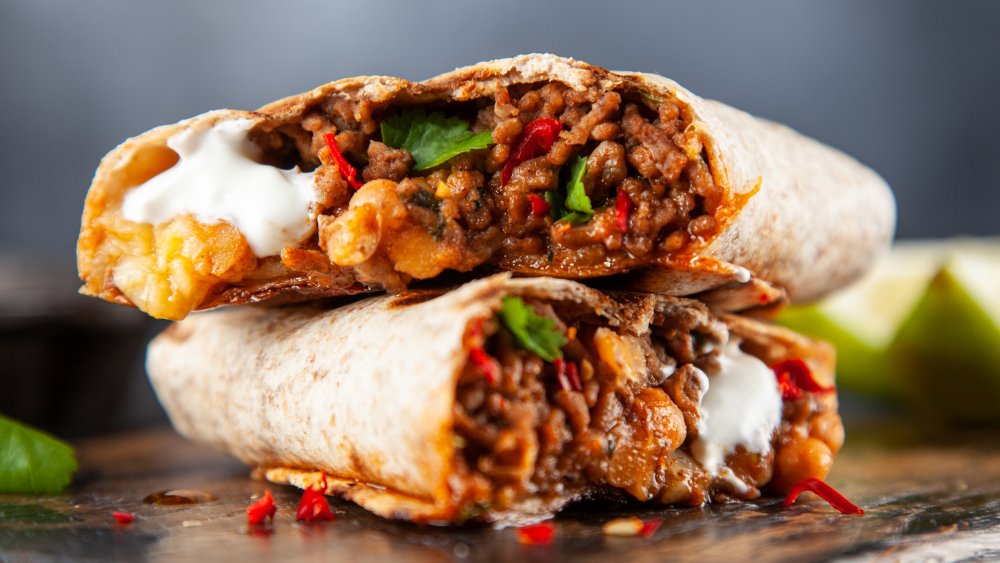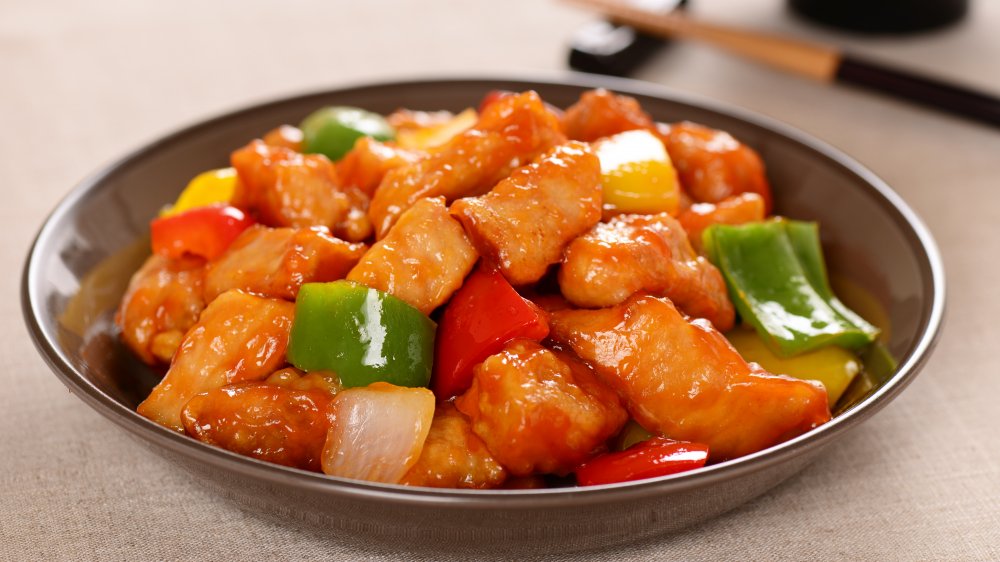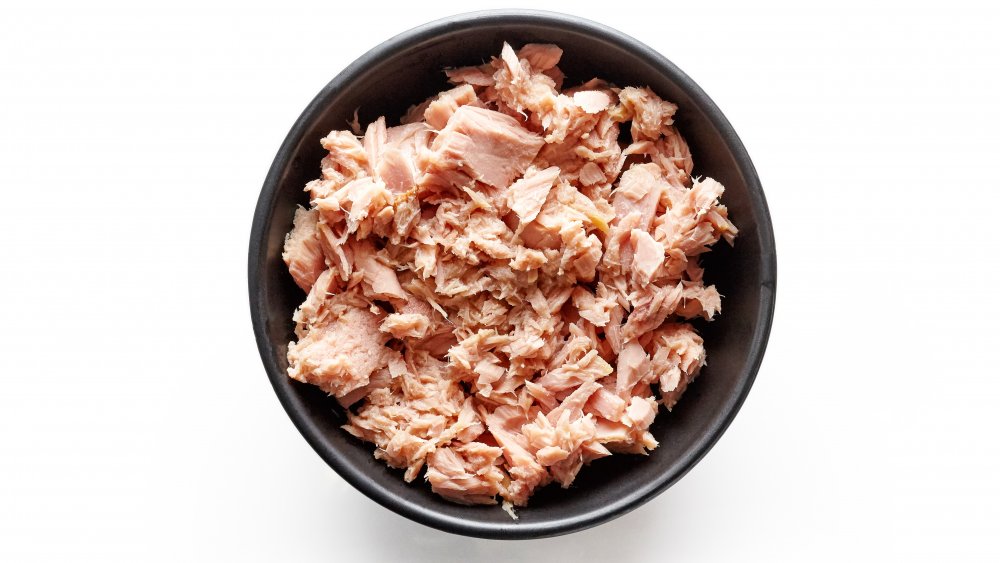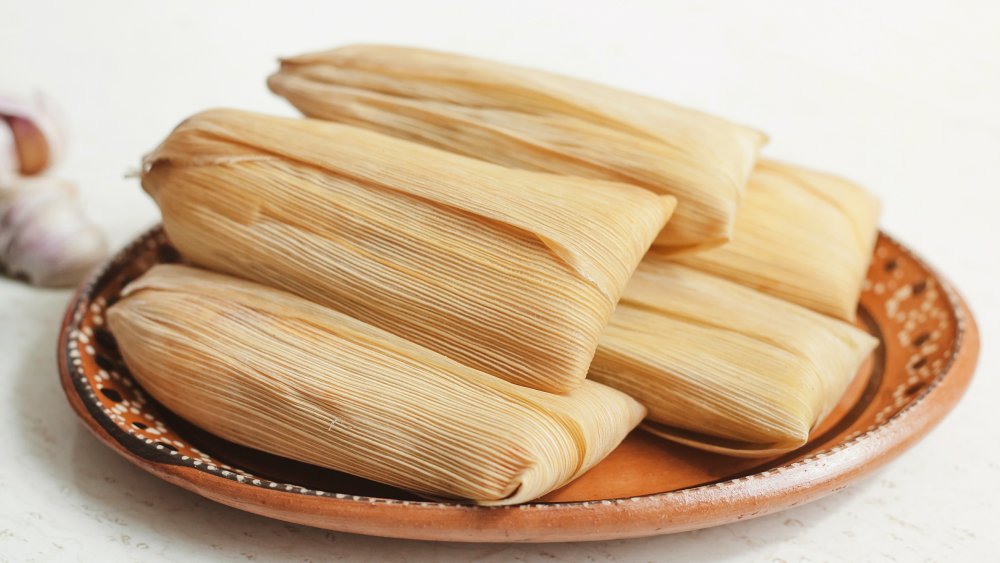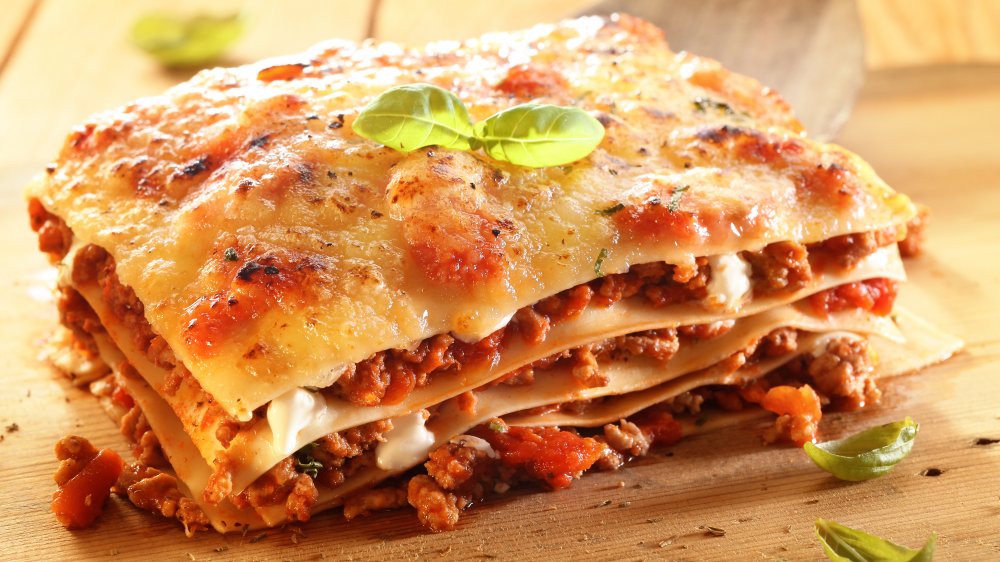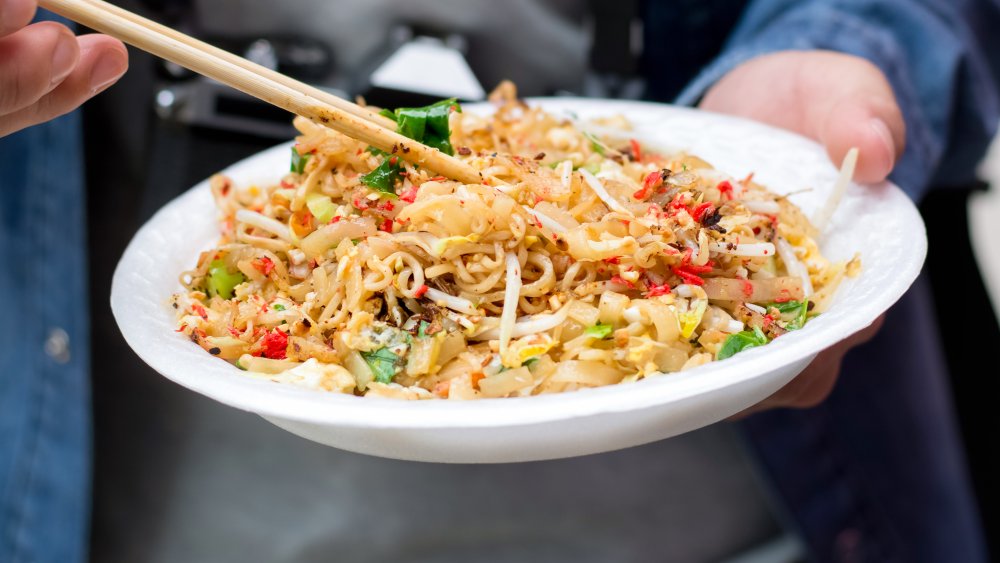Prison Foods That Are Actually Delicious
Prisons don't exactly enjoy a reputation as one of the best places to get a meal. In the public consciousness, they rank below — way below — middle-of-nowhere gas stations and underfunded public school cafeterias when it comes to quality, taste, and variety. Prisons are institutions, and thus, they have institutionalized cafeterias, either publicly funded or outsourced to corporations. In both cases, as little as possible is going to be spent on the food that gives the least popular members of society their daily sustenance and nutrition. It's a lot of mass-produced meals, complete with cheap, filling simple carbohydrates.
However, many correctional facilities have something called a commissary, where prisoners can use private accounts (filled by family on the outside or their prison job salary) to buy supplemental and far tastier food items than what's on offer in the mess hall. And if you're creative enough, those foodstuffs can be used to whip up some pretty tasty meals, snacks, and beverages. So if you're looking you're looking to try some cell block cuisine, here are some DIY prison foods that are actually delicious.
Oh my, sweet potato prison pie
On his first day of serving a three-year sentence for weapons possession in New York's notorious Rikers Island, Albert "Prodigy" Johnson of the rap duo Mobb Deep was sent to the prison infirmary. His diagnosis was food poisoning, which hit after eating just one meal's worth of low-quality prison grub. From that point on, Johnson, who suffered from sickle cell anemia, set out to try and eat as healthy as possible during his incarceration so he could navigate the already significant challenges of prison without the constant worry of getting sick.
He developed a series of recipes, which he later collected and published as Commissary Kitchen: My Infamous Prison Cookbook. Now, these are certainly not kale-and-yoga healthy, but they do include vegetables and argue for the bolstering effects of home-cooked meals. A standout from his collection is the sweet potato pie. It starts off with a crust made from five butter packets, a couple of sugar packets, a honey packet, and crushed graham crackers, with the filling comprised mostly of canned yams. After some time in the microwave and a toaster oven, the result is a personal-sized pie that isn't exactly like what mom used to make, but it'll do.
Chi Chi is whatever you want it to be
There's more than one way to make Chi Chi, an umbrella term for a savory dish consisting of whatever is available and mixed up together. Chi Chi can be something like canned tuna and a mayonnaise packet, or it could also be a tasty concoction of Vienna sausage, ramen, and canned chili. Honestly, there are no rules when it comes to Chi Chi.
A former inmate in the Pennsylvania penal system shared his recipe with The Philadelphia Inquirer. His dish consists of ramen noodles, cheese curls (like Cheetos), summer sausage (that big meat log from a Hickory Farms gift basket), pepperoni, barbecue sauce, honey, pickles, chili powder, and meatless canned chili mixed in a plastic bag with hot water, which turns it all into a meaty, spicy stew that easily beats the cafeteria sloppy joes. It does, however, pack enough sodium to stop an elephant's heart.
A creamy prison cheesecake made with fake cream and real cheese
The early seasons of the Netflix series Orange is the New Black were based on a memoir of the same name by Piper Kerman, an upper middle-class white woman who found herself doing a year-long stint at a minimum-security federal prison in Danbury, Connecticut. She was played on the show by Taylor Schilling, and while this cookery event wasn't dramatized, the real Kerman made a no-bake cheesecake for a fellow inmate's going away party.
This no-frills dessert starts with crushed graham crackers molded into a crust with the help of stolen margarine. (If Kerman risked getting sent to solitary confinement for stealing an ingredient, it's got to be good.) To make the filling, Kerman smashed a Laughing Cow cheese wheel with some vanilla-flavored instant pudding mix, then gradually added in some lemon juice and powdered non-dairy creamer. Finally, Kerman poured the filling on the crust and then put the dessert "on ice in [her] bunkie's cleaning bucket to chill until ready to eat." For those who don't have a bunkie, or their bunkie's ice, allowing this to set in a refrigerator for few hours will work just fine.
A latte for a fraction of the price
Those creamy, sugary, caffeine-loaded Starbucks drinks are delicious and habit-forming, and while losing access to them due to a stay in prison or because the coffee chain discontinued your beverage of choice is a relatively small problem, it's a problem nonetheless. For those still craving Starbucks' long-gone Maple Macchiato, a "prison latte" just may suffice. It's pretty simple to make, too.
Take a small carton of milk (the individual serving-sized ones, like those found in a cafeteria), open up the top, and run it under a hot water tap until the liquid inside starts to steam. Then pour in three heaping spoonfuls of instant coffee, along with a maple syrup packet or two leftover from prison breakfast. All of the elements are there — coffee, sugar, dairy, and maple flavoring. It's almost as good as the real thing. For added Starbucks-level authenticity, write your own name on the side of the carton, misspelled.
You'll be sweet on correctional cake
On the reality show 60 Days In, in which non-offenders went undercover in prison to see what incarceration feels like, a woman named Barbra learned a recipe for "correctional cake," a treat she liked so much that she made it for her husband's birthday on the outside. Her version includes crushed peanut butter cookies (such as Nutter Butters), Reese's Peanut Butter Cups, a Hershey bar, a scoop of peanut butter, and two scoops of powdered cappuccino mix.
So after you've got all the candy together, separate the peanut butter sandwich cookies, scoop out the filling into a bowl, and set it aside. Then pulverize the peanut butter cookies into a second bowl and add some water to form a dough ball. Afterward, mix broken-up pieces of Reese's in with the peanut butter cookie filling and the cappuccino powder. Add a hint of water, stir, and microwave until it's melted and has the consistency of caramel sauce. Then melt the chocolate bar and save it, because now the layering happens — a layer of dough, then peanut butter concoction, dough again, peanut butter again, and then top it all with melted chocolate bar (and melted peanut butter). After two hours of refrigeration (or chilling in a bowl of ice), it's ready.
Recipes for correctional cake, also known as "prison cake," differ greatly from prison to prison, prisoner to prisoner, and from what's available in their commissary or private stashes. For example, another popular recipe uses crushed Oreo cookies and M&Ms instead of Nutter Butters and chocolate bars, respectively.
A prison burrito could be anything stuffed into a tortilla
Considering that Taco Bell has reinvented itself in recent years by incorporating salty snack foods into its menu — a taco with a shell made from Doritos and a burrito with Fritos inside, for example — a prison bunk burrito stuffed with various junk foods isn't all that weird. In fact, it wouldn't be surprising if something similar to "Avary's Jailhouse Burrito" showed up on the Taco Bell menu someday.
This particular recipe comes from Clifton Collins Jr.'s book Prison Ramen: Recipes and Stories from Behind Bars, which demonstrates that ramen noodles are the new cigarettes, in that they're extremely valuable in prison. They can be used to make all kinds of savory meals, including this particular dish. So if you're interested in making Avary's Jailhouse Burrito, first you cook and season a bag of ramen in its own packaging (just add water). While that cooks, you can mix together melted Velveeta, hot sauce, jalapeño-flavored bagged popcorn, Cheetos, and Goldfish crackers. Add in the ramen, stuff the mixture into a commissary tortilla, and you've got something downright crave-worthy.
The sweet in prison-style sweet and sour pork comes from Kool-Aid
Are you craving some Asian-inspired cuisine, but your funds are too low to order in from your local Chinese food restaurant? Why not try your hand at making the classic takeout dish of sweet and sour pork ... but in the manner that prisoners make it in their cells out of commissary-available ingredients?
In 2014, professional skateboarder and ex-convict Andy Roy shared his recipe and technique for this unlikely culinary delight. Before cooking ramen noodles (in whatever manner one prefers), smash them up by throwing the pack on the ground a few times. While they soften in the pot, chop up a few Slim Jims or other processed snack meat sticks. When you toss all the protein into the noodles, add a packet of Cherry Kool-Aid (for the dish's signature sweetness and bright red color) and then some gently-crushed pork rinds. Mix it up with a packet of Sriracha or another hot sauce, and then, voila, dinner is served.
Prison wine has notes of fruit cocktail and ketchup
When yeast feeds on something sugary and is left to ferment, it makes alcohol. In other words, making booze isn't too difficult, so prisoners desperate for hooch devised an alcoholic drink called "pruno," a wine once primarily made from shelf-stable dried plums, aka prunes. However, there are as many ways to make prison wine as there are reasons for incarceration, all of them dangerous. Jailhouse vintners not only have to worry about their fellow prisoners trying to steal their coveted brew, but they also risk getting extra time slapped on their sentences.
According to Thrillist, one way to make prison wine is with oranges. Take six, peel them, and place them in a zippered baggie with a can or two of fruit cocktail. More sugar and a little acid is needed to trigger fermentation, and for prisoners, that can come in the form of 60 sugar packets and four ketchup packets, respectively. As for the yeast, bread has yeast, so a couple slices of bread need to be added to the mix.
Prisoners then punch the sealed bag until the mixture is a nice pulp and then place it somewhere warm to aid fermentation (wrapped in a towel or under a bed). They take it out once a day for a week to pour warm water over the bag, which helps the yeast do its thing. They'll also open the bag just a bit to allow gases to escape. Strain if possible, and have a drink ... or don't. After all, the level of alcohol is so high that it could be toxic.
A taste of the sea from cell block C
Do we need to warn you that "Prison Seafood Spread" isn't going to taste like the freshest sushi or even the catch of the day at a beachside shack? It probably falls somewhere between high-quality cat food and Tuna Helper, although it doubles down on the fish-softening starches, incorporating both ramen noodles and white rice (which commissaries sell in small portions). But the star of the show is the seafood, and we're talking about the kind of the canned variety, including tuna, baby scallops, and oysters, along with a variety of easily available spices.
The once incarcerated Isa Abdullah describes this as a "baller meal" that's also acceptable for observant Muslims. Of course, considering that the prices of these items at a prison commissary are much higher than a local grocery store, this seafood spread would probably cost as much as a meal at Red Lobster on the outside.
Frito-based tamales sound pretty good
Andrew Medal did some time in prison, but he used that forced break from the real world to get crafty and amass content for his post-lockup life as an entrepreneur. For example, he published a survival guide to prison called Don't Drop the Soap: Prison Life Hacks, Food Recipes, Workouts, Slang & More. In this book, Medal collected and created a lot of recipes, including one for tamales. Normally, this traditional, doughy, classic Mexican food requires a lot of work, kitchen tools, and corn husks to get right ... but not the way Medal does it.
According to Medal's recipe, it starts by crushing up one bag of Fritos and a bag of Flamin' Hot Cheetos. Mix those together in one of the bags they came in and then slowly add hot water while stirring to create a thick sludge. Close up the bag as much as possible and tenderly massage the dough through the packaging, kneading the contents and draining off excess water as needed. When the dough is stiff and dry, remove it from the bag and mold it into the thick, rectangular shape of a tamale. After letting it sit for five minutes, it's ready to eat. No cooking required, and it's even vegetarian. (Medal advocates spicing it up with a hot sauce packet).
This lasagna stacks up against the competition
With all its fillings, carb-loaded noodles, mountains of melted cheese, and a small lake's worth of sweet and tangy tomato sauce, lasagna is among the all-time comfort food champions. However, it takes a lot of effort and time to make this dish, and so it's far easier to just order a pizza, which uses most of the same ingredients. But pizza delivery isn't an option in prison where there's a definite and desperate need for the simple comfort provided by a home-cooked meal.
Fortunately, enterprising inmates have figured out how to make a jailhouse lasagna that approximates the real thing pretty well. According to Reddit user jacobgill86, when he was locked up, he concocted a lasagna that was "really good, but kinda labor intensive and expensive." It started with crushed cheese crackers, mixed up with seasonings and water, then formed into a dough. Then it would get flattened out and microwaved, turning into "a noodle like thing" as it cooked and coalesced. These near noodles were then placed in layers amidst thick hunks of Velveeta, slices of summer sausage, tomato sauce, and whatever veggies he could get.
For a quicker and easier prison-style Italian meal, formerly incarcerated Reddit user murdanyc916 created a spaghetti dinner made from ramen noodles, ketchup packets, jalapeño slices, salt, and pepper.
Prison pad Thai, heavy on the peanuts
In North America, easily the most well-known and widely liked example of Thai cuisine is pad Thai. What's not to like? It's not at all exotic and fits in easily with Western tastes. It consists of thickly cut rice noodles, cooked up in a rich, savory, sweet, and mildly spicy peanut sauce, often tossed with chicken or pork. And then it's all topped with chopped scallions and peanut crumbs. Nearly every Thai restaurant and Thai mall food court stand in the United States offers the dish to enthusiastic customers, but it's not one that's often made in prison cafeterias.
Fortunately, this dish can be made in a prison bunk with common commissary items. Rapper and former inmate Albert "Prodigy" Johnson includes an easy recipe for it in his prison-style cookbook, Commissary Kitchen (via Reason). Simply cook up some ramen noodles as one would and then throw them in a bowl with a peanut butter (crunchy or creamy, it's your call) and canned veggies. Mix it all up, and for authenticity's sake, top it with crushed peanuts.
Chocolate ice cream, with window-side service
Ice cream is a luxury most of us take for granted. Whenever the craving for the sweet and creamy frozen treat hits, it's easy to head down to a grocery store or a scoop shop and grab a carton or cone of chocolate, vanilla, or rocky road. As prison necessarily limits movement and denies inmates many of life's pleasures, ice cream behind bars just isn't going to happen unless residents get extremely crafty. And even if they do make an ice cream substitute from scratch, it has to be in the winter months, when a frozen dessert doesn't quite hit the spot that it would during a brutal summer heat wave.
Nevertheless, this recipe from former inmate and Reddit user murdanyc916 sounds objectively tasty. Their recipe begins with regular, commercially produced chocolate bars obtained from the prison commissary. Melt them (using whatever is convenient — a heater or a microwave) and stir it all into a carton of milk. Then leave it right up against a window that's extremely cold because it's winter outside. By the end of the day, you've got something approaching chocolate ice cream.
